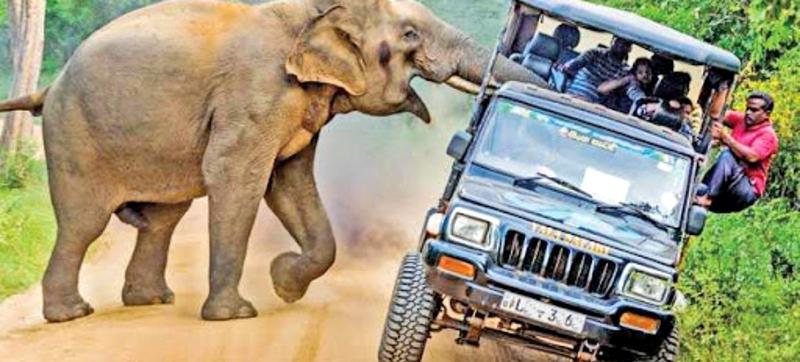
In the Asian and the African continents, elephants were once frequently spotted, and throughout the 19th century a large number of elephants were killed for their tusks which fetched a lot of money. At present however, due to restrictions and regulations that have been imposed on the ivory trade, the killing of elephants has relatively declined. But still elephant conservationists complain that the number of elephants in their entire former range has alarmingly decreased. Their survival is mainly threatened by the destruction of their habitat, while persistent poaching for ivory and trophy hunting are also some of the other threats faced by the elephants.
Asian, African elephants
 The elephants found in the Asian continent are easily recognised due to their comparatively small ears, while their counterparts in the African continent have large ears.
The elephants found in the Asian continent are easily recognised due to their comparatively small ears, while their counterparts in the African continent have large ears.
Also, the Asian elephant has four hooves on its hind foot while the African elephant has three hooves. Several studies conducted recently note that the ‘African elephant’ has two unique species; the ‘African forest elephant’ (Loxodonta cyclotis) and the ‘African bush elephant’ (Loxodonta africana).
Wild elephants need a lot of space and a great deal of nourishment. They consume many hundreds of kilos of plant matter daily.
As revealed in a research conducted by Jamie Lorimer, Asian elephants are “companion species parexcellence: too social and sagacious to be objects; too strange to be human; too captive to be wild, but too wild to be domesticated”.

The mahoutship and the maintenance of elephant management represent the fact that humans and elephants can have a good companionship.
In the context of the Sri Lankan elephant conservation, there are challenges of affability with regard to the companionship of the humans and elephants.
A population of about 4,000 elephants live in protected areas of forest fragmentation, transit centres, orphanages, cultivated lands and lands belonging to private owners. It is reported that both, humans and elephants in their encounters get affected, and both get killed annually during these encounters.
Frequent occurrence
Due to the rapid increase of human settlement and urbanisation, the human-elephant conflict is not a strange phenomenon but a frequent occurrence equally disturbing both, the human and the elephant. The squabble for land space is one of the central reasons for the conflict.
 M.P.J Dharmaratne and P.C. Magedaragamage in their research of ‘Human-Elephant conflict and solutions to it in Sri Lanka’ state that the elephant survival is mainly threatened by deforestation, monoculture tree plantations, encroachment, burning and shifting cultivation.
M.P.J Dharmaratne and P.C. Magedaragamage in their research of ‘Human-Elephant conflict and solutions to it in Sri Lanka’ state that the elephant survival is mainly threatened by deforestation, monoculture tree plantations, encroachment, burning and shifting cultivation.
There has been news on human-elephant conflict happening particularly as the elephants infiltrate into the cultivated lands of the farming community whose lands are located adjoining elephant habitats.
The conflict is ubiquitous in areas where elephant migration route lies through small forest pockets. Bengtsson and his fellow researchers suggest that ‘dynamic reserves’ which can cling to the lively migration routes of the elephants beyond their existing boundaries should be encouraged without restricting the elephant’s movement to the protected areas.
This type of approach might lessen and mitigate the dreadful consequences of the human-elephant conflict and reshape the cordiality of the age-old human-elephant companionship.
